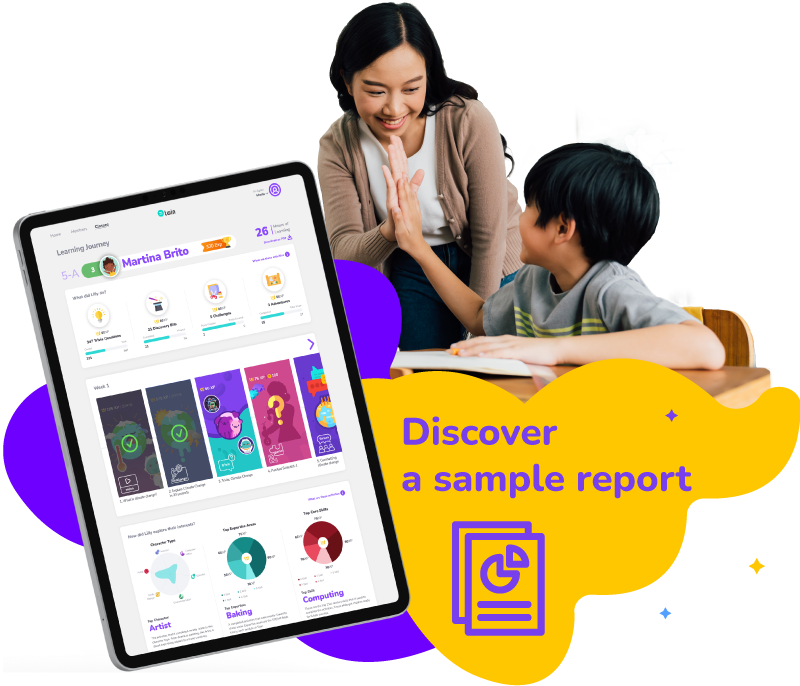As technology continues to advance, it is becoming evident that it has the potential to revolutionize many industries, including education. Artificial intelligence (AI) is one of the key technological innovations that have been making waves in the education sector. While AI is still in its early stages of development, its potential in improving primary education is immense. In this article, I will explore the benefits of AI in education, real-life examples, challenges of implementing AI in education, and the future of AI in primary education.
Introduction to AI in Education
AI in education involves the use of advanced algorithms and machine learning techniques to improve learning outcomes. AI-powered tools can be used to personalize learning, automate administrative tasks, and provide data-driven insights that can help educators make informed decisions. AI can be used across various stages of primary education, from early childhood education to higher education.
The use of AI in education is not a recent phenomenon. Some of the earliest applications of AI in education include intelligent tutoring systems, which were developed in the 1970s. These systems were designed to provide personalized learning experiences to students, based on their individual needs and learning styles. Since then, AI has evolved, and new applications are being developed to cater to the changing needs of the education sector.
Advantages of Incorporating AI in Education
The use of AI in education has many advantages, both for students and educators. One of the most significant advantages of AI in education is its ability to personalize learning. AI-powered tools can analyze student data, such as their learning styles, strengths, and weaknesses, to provide customized learning experiences. This personalized approach to learning can help students learn more effectively and efficiently.
Another advantage of AI in education is that it can automate administrative tasks, such as grading, scheduling, and record-keeping. This automation can save educators time and reduce their workload, allowing them to focus on teaching. AI-powered tools can also provide real-time feedback to students, helping them identify areas where they need to improve and providing them with the resources they need to do so.
Real-life Examples of AI in Education
There are many examples of AI in education today. One of the most well-known examples is the use of chatbots in education. Chatbots are AI-powered tools that can interact with students and provide them with information and support. For example, the Georgia State University uses a chatbot called “Pounce” to help students navigate the university’s admission process, while the University of Georgia uses a chatbot called “Sara” to answer student questions.
Another example of AI in education is the use of adaptive learning software. Adaptive learning software uses machine learning algorithms to adjust the difficulty of learning materials based on a student’s performance. This approach to learning can help students learn at their own pace and reduce the risk of them becoming bored or frustrated.
AI in Classrooms – How it Benefits Primary Education
AI in classrooms can benefit primary education in many ways. For example, AI-powered tools can be used to provide real-time feedback to students, helping them identify areas where they need to improve and providing them with the resources they need to do so. AI can also be used to personalize learning, providing customized learning experiences that cater to the individual needs of each student.
Another benefit of AI in classrooms is that it can help educators identify students who may be struggling with learning. By analyzing student data, such as their performance on tests and assignments, AI-powered tools can identify students who may need extra support and provide them with the resources they need to succeed.
Additionally, Twin’s skill report feature can be a game-changer in leveraging the benefits of AI in education. Twin provides comprehensive reports to teachers and parents, which highlight the learning outcomes, skill development progress, and areas of interest for each student. With Twin, teachers and parents can understand their child’s performance on the app, and receive actionable insights that help guide their child’s learning. By combining AI-powered tools with Twin’s skill report feature, educators can provide personalized learning experiences and identify struggling students who need extra support, making AI a powerful ally in the classroom.

Impact of AI on Student Learning
The impact of AI on student learning can be significant. AI-powered tools can help students learn more effectively and efficiently by providing personalized learning experiences and real-time feedback. This approach to learning can help students stay engaged and motivated, reducing the risk of them becoming bored or frustrated.
AI can also help students develop critical thinking and problem-solving skills. By providing students with challenging learning materials and opportunities to practice these skills, AI-powered tools can help students develop the skills they need to succeed in the 21st century.
AI in Teaching – How it Benefits Educators
AI in teaching can benefit educators in many ways. For example, AI-powered tools can be used to automate administrative tasks, such as grading, scheduling, and record-keeping. This automation can save educators time and reduce their workload, allowing them to focus on teaching.
AI can also provide educators with data-driven insights that can help them make informed decisions. By analyzing student data, such as their performance on tests and assignments, AI-powered tools can help educators identify areas where students may need extra support and provide them with the resources they need to succeed.
Challenges of Implementing AI in Education
Despite the many benefits of AI in education, there are also challenges to its implementation. One of the biggest challenges is the cost of implementing AI-powered tools in classrooms. AI-powered tools can be expensive to develop and implement, making it difficult for schools and educators with limited budgets to adopt them.
Another challenge is the need for educators to have the necessary skills and expertise to use AI-powered tools effectively. Educators will need training and support to use these tools properly, and this training can be time-consuming and costly.
Ethics and Privacy Concerns with AI in Education
AI in education also raises ethical and privacy concerns. For example, there is a risk that AI-powered tools may be used to collect and store sensitive student data, such as their academic performance and personal information. This data must be protected to ensure that students’ privacy is respected and that their data is not misused.
Another concern is the potential for bias in AI-powered tools. If these tools are not designed and programmed properly, they may perpetuate existing biases and discrimination, leading to unfair treatment of certain students.
Future of AI in Education
The future of AI in education is promising. As technology continues to advance, AI-powered tools will become more sophisticated and affordable, making it easier for schools and educators to adopt them. AI-powered tools will also become more integrated with other technologies, such as virtual and augmented reality, providing students with immersive learning experiences.
In the future, AI-powered tools may also be used to provide more customized and flexible learning experiences, allowing students to learn at their own pace and in their own way. This approach to learning can help students stay engaged and motivated, improving their chances of success.
Conclusion: The Promise and Potential of AI in Primary Education
AI in primary education has the potential to revolutionize the way we teach and learn. By providing personalized learning experiences, automating administrative tasks, and providing data-driven insights, AI-powered tools can help students learn more effectively and efficiently. AI can also help educators save time and make informed decisions, improving the quality of education.
While there are challenges and concerns associated with the use of AI in education, the promise and potential of this technology are immense. As we move towards a more technology-driven world, it is essential that we embrace the potential of AI in education and work to ensure that it is used ethically and responsibly.
References
- Georgia State University. (n.d.). Pounce. Retrieved from https://admissions.gsu.edu/pounce/
- University of Georgia. (n.d.). Sara. Retrieved from https://www.admissions.uga.edu/ask-sara/

